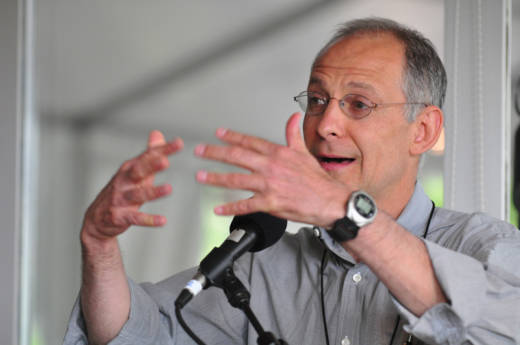"It’s not that we don’t have information," he said. "The problem is what do you do once you have the information. And there, tech is not going to be the key thing. Medicine fundamentally is about human interaction. That is really the most important challenge, and I don’t think the tech sector has locked onto that part of it."
This sort of digital contrarianism is not unheard of in the health care biz, even at events and panels where tech-oriented medicine is the focus. Last September, for instance, at the Stanford Medicine X conference, Stephen Downs, the chief technical officer at the Robert Wood Johnson Foundation, said digital health companies weren't focused on solving the right problems. From a report by KQED's Lesley McClurg:
In this age of the Fitbit, Downs said, digital health companies are focused on monitoring the consequences of our notoriously sedentary lifestyles. But what is really called for from innovators is to stop treating symptoms and start remedying the roots of the problem.
“The system needs to be re-engineered,” said Downs. ... “We don’t need an app that counts steps, because that really just tells you that your day doesn’t naturally incorporate the time and space to walk.”
Instead of a focus on monitoring, he said, engineers and designers need to incorporate solutions --such as enabling urban farming --to core health problems like obesity and heart disease.
Policy Versus Scientific Advances
Several times now at conferences I've witnessed one expert or another--in the midst of a coterie of big data boosters and monitoring mavens, no less--offer up a kind of indirect scolding by cautioning that the best way to improve health is not via smartphones, but smart policy.
That dichotomy to some degree echoes a conversation I once had with a longtime health journalist who thought even something as institutionally sanctioned and evidence-based as California's stem cell initiative was a waste of money, because the funds would have been better directed toward policy prescriptions that address basic health needs.
I asked Emanuel to comment on this point, specifically mentioning stem cells.
"Here's a thought experiment," he said. "You know how many lives stem cells have saved? A tiny number compared to the 2.7 million people [in the U.S.] who die each year.
"Now, how many lives have been saved by the ACA?" he said. "I don’t know, but it ain’t zero. I intersect with people all the time who happen to recognize me on the street and say I or a family friend got diagnosed with cancer and got therapy or got a heart transplant or something like that.
"In the future, even under a rosy projection, stem cells will not save tons of people," he said. "If you were to cure every single cancer in the U.S.-- no one in America ever dies again of cancer--we add three years to the average life expectancy. It’s a big improvement but it is not anything close to [gains achieved by] doing the basics."
The two most effective goals for increasing longevity, he said, would be to reduce smoking even further and to control blood pressure.
"We’re not talking high tech," he said. "There is nothing you can do that is going to come close to those two interventions."
Of course, medical value depends on your perspective, and Emanuel's is a public health view. Someone suffering from any number of horrendous diseases that stem cell research is targeting is not going to be thinking: "Boy, what a waste to be chasing stem cell cures. I sure wish they'd divert that money to anti-smoking programs."
And even on the health tech front, some doctors have come around to viewing digital monitoring devices like mobile EKGs as useful.
As for computers versus doctors, physician and author Bob Wachter, has written that radiology may be the canary in the coal mine in terms of algorithms replacing humans.

